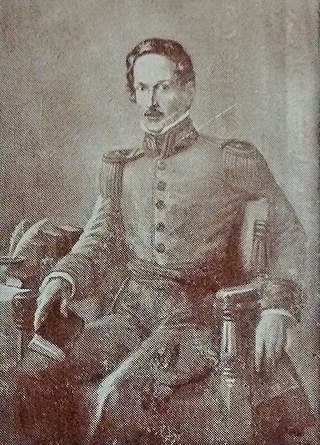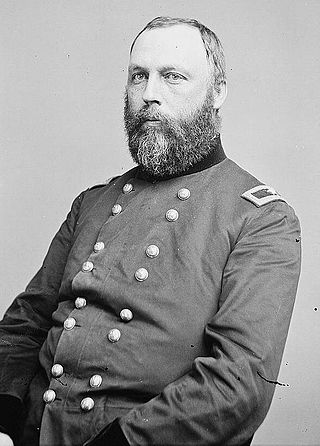Notes
This article needs additional citations for verification .(November 2018) |
Jean Baptiste Ricord (born in Paris, France, in 1777; died on the island of Guadeloupe, West Indies, in 1837) was a French-American physician.
He was educated in France and in Italy, whither his father had fled during the French Revolution, and subsequently accompanied his father to the United States, where they settled in Baltimore, Maryland. After graduating from the New York College of Physicians and Surgeons in 1810, he went to the West Indies to make researches into botany and natural history, and traveled and practised medicine extensively in the islands until he returned to New York. He was an accomplished scholar, musician, and painter, and a member of various learned societies in France and the United States.
Many of his writings were signed "Madiana," the name of his homestead in France. In addition to contributions to scientific and other journals, Ricord published:
He left many manuscripts that have not been published.
This is a colonial medical text on illnesses common to Afro-Caribbean enslaved plantation laborers, but it is also a text mutually interested in poisoning and illnesses resembling poisoning.
He married Elizabeth Stryker in 1810. She accompanied him in his expeditions to the West Indies, and was a noted educator. Their son Frederick William Ricord was a New Jersey politician and author. Another son, John Ricord, was a lawyer and traveler. Jean Baptiste's brother Alexander Ricord (born in Baltimore in 1798; died in Paris 3 October 1876) was also a physician. He was educated in Baltimore, moved to France in order to study under Cuvier, and received his diploma as doctor in medicine in Paris in 1824. He was an assistant surgeon in the French Navy, and a correspondent of the Academy of Medicine, but devoted his life chiefly to natural history, received the decoration of the Legion of Honor in 1845, and contributed largely to scientific journals. Another brother, Philippe Ricord, was a noted French physician.
This article needs additional citations for verification .(November 2018) |

Jean-Baptiste Biot was a French physicist, astronomer, and mathematician who co-discovered the Biot–Savart law of magnetostatics with Félix Savart, established the reality of meteorites, made an early balloon flight, and studied the polarization of light.

Jean François Fernel was a French physician who introduced the term "physiology" to describe the study of the body's function. He was the first person to describe the spinal canal. The lunar crater Fernelius is named after him.

In the Middle Ages, the medicine of Western Europe was composed of a mixture of existing ideas from antiquity. In the Early Middle Ages, following the fall of the Western Roman Empire, standard medical knowledge was based chiefly upon surviving Greek and Roman texts, preserved in monasteries and elsewhere. Medieval medicine is widely misunderstood, thought of as a uniform attitude composed of placing hopes in the church and God to heal all sicknesses, while sickness itself exists as a product of destiny, sin, and astral influences as physical causes. On the other hand, medieval medicine, especially in the second half of the medieval period, became a formal body of theoretical knowledge and was institutionalized in the universities. Medieval medicine attributed illnesses, and disease, not to sinful behavior, but to natural causes, and sin was connected to illness only in a more general sense of the view that disease manifested in humanity as a result of its fallen state from God. Medieval medicine also recognized that illnesses spread from person to person, that certain lifestyles may cause ill health, and some people have a greater predisposition towards bad health than others.

Ambroise Paré was a French barber surgeon who served in that role for kings Henry II, Francis II, Charles IX and Henry III. He is considered one of the fathers of surgery and modern forensic pathology and a pioneer in surgical techniques and battlefield medicine, especially in the treatment of wounds. He was also an anatomist, invented several surgical instruments, and was a member of the Parisian barber surgeon guild.

Philippe Ricord was a French physician.

Tomás Joaquín de Acosta y Pérez de Guzmán was a Colombian explorer, historian, chorographer, and geologist.

Jean-Étienne Dominique Esquirol was a French psychiatrist.

Jean-Baptiste Denys was a French physician notable for having performed the first fully documented human blood transfusion, a xenotransfusion. He studied in Montpellier and was the personal physician to King Louis XIV.

William Alexander Hammond was an American military physician and neurologist. During the American Civil War he was the eleventh Surgeon General of the United States Army (1862–1864) and the founder of the Army Medical Museum.
Nicholas Halma was a French mathematician and translator.

Jean-Baptiste Marc Bourgery was a French physician and anatomist who was a native of Orléans. Within 20 years, along with the artist Nicolas Henri Jacob, he created the comprehensive anatomy textbook Traité complet de l’anatomie de l’homme.

John Ricord was a lawyer and world traveler. He was involved in cases in Texas, Oregon, Hawaii, and California.

The era of European and American voyages of scientific exploration followed the Age of Discovery and were inspired by a new confidence in science and reason that arose in the Age of Enlightenment. Maritime expeditions in the Age of Discovery were a means of expanding colonial empires, establishing new trade routes and extending diplomatic and trade relations to new territories, but with the Enlightenment scientific curiosity became a new motive for exploration to add to the commercial and political ambitions of the past. See also List of Arctic expeditions and List of Antarctic expeditions.

Andrea Vaccà Berlinghieri was an Italian surgeon born in Montefoscoli, a village in the municipality of Palaia. His older brother, Leopoldo Vaccà Berlinghieri (1768–1809), was a noted Tuscan military figure. His father, Francesco Vacca Berlinghieri (1732-1812), was also a noted physician and writer of medical texts in Tuscany.

Charles Frick was a Baltimore physician.
Elizabeth Ricord was a United States educator.

Frederick William Ricord was a noted American author.

Justus Erich Bollmann or Eric Bollman was a German physician. He was involved in a failed attempt to rescue the Marquis de Lafayette from detention in Olmütz. In the United States, he was involved in the Burr conspiracy.

Archibald Bruce was an American physician and mineralogist.
Pierre Amable Jean-Baptiste Trannoy was a French physician, hygienist and botanist.